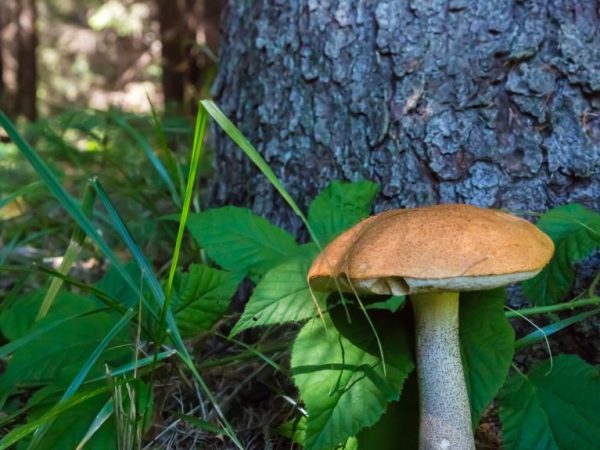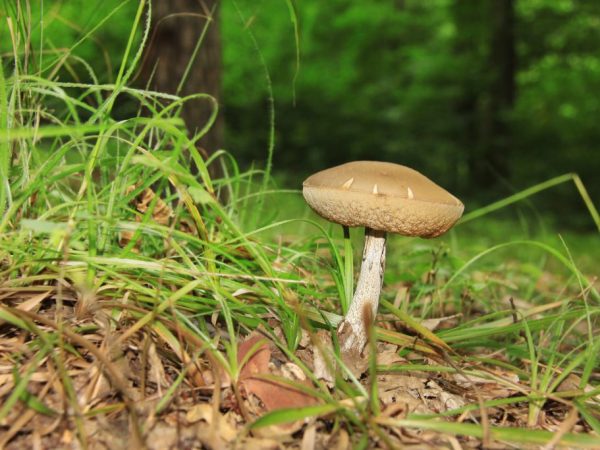Description of the false boletus
If you put an inedible or poisonous mushroom in a basket during the "quiet hunt", you can endanger your health and spoil the harvested crop. One of these types is a false boletus.

Description of the false boletus
Description of this boletus
Boletus mushrooms belong to the 2nd category of nutritional value of edible mushrooms and belong to the genus Leccinum or Obabok of the Boletovye family. There are about 40 species of such mushrooms in the world. The most common of them: common boletus, n. Gray or hornbeam, n. Blackening or chess, n. Black, n. Marsh, n. Multi-colored, n. Harsh and n. Turning pink. Their main difference is the place of growth and the color of the caps.
This inhabitant of birch groves has a hemispherical hat, which becomes pillow-like with age. Its diameter ranges from 15-18 cm. The surface of the cap in rainy weather is covered with mucus, in dry weather it has a smooth and velvety structure. The pulp is white and dense, darkens when cut. As it ages, it becomes loose and watery, which impairs food and taste characteristics.
Its leg is long - up to 15 cm, cylindrical in shape, in diameter - up to 3 cm. Its surface along its entire length is covered with grayish scales, outwardly resembles a birch trunk. In the old fruiting body, it is tough and fibrous, in the young it is fleshy and dense. The color of the spore powder is olive-brown.
The mushroom grows in deciduous forests, preferring light and spacious birch forests, the edges of meadows, trails and ravine slopes. Mostly found singly or in small groups. The fruiting period is from early June to late October. The fruiting body grows 4 cm per day, ripens in 6 days. Then it quickly grows old and is affected by pests.
This mushroom is considered tasty and healthy. It is easy to prepare and does not require any special processing. Its only drawback is that it darkens almost to black with any kind of processing, although this does not affect its taste in any way. It is added to soups, side dishes, and used for filling pies. It is good in salted and pickled form.
Differences of an inedible mushroom
False boletus, or gall mushroom, looks like a representative of an edible species. That is why it is often confused with a stump or porcini mushroom, if a person does not know their main differences. False boletus is considered inedible, and when consumed in large quantities, it causes food poisoning.

The false mushroom looks like a lump
The main differences that make it possible to identify an inedible gall fungus include the following signs:
- Hat: in a gall fungus it has a velvety surface, in a real boletus it will be smooth and shiny. A bright poisonous brown or fiery red color makes it noticeable in the forest.
- Dimensions: the inedible mushroom is more massive, the leg has a tuberous shape and a thickening at the bottom, like that of an amanita.
- Leg: This boletus is outwardly similar to the trunk of a birch (due to the presence of dark scales), in bile it has red-brown bloody veins.
- Hymenophore: the bottom of the cap of the false organism has a pale pink tint at a young age, getting old, it acquires a dirty color. A real boletus on the back of the cap is white with a cream shade.
- Color change in case of damage: a real boletus does not change color, while its counterpart darkens, especially at the base of the leg.
- Taste: The gall fungus has a specific taste, it is bitter, causes a burning sensation, therefore it is rarely affected by worms and insects, and in medicine, choleretic drugs are prepared on its basis.
False boletus is considered relatively safe, in contrast to the poisonous pale toadstool or fly agaric. Before you put a mushroom in a basket that casts doubts about its edibility, it is worth breaking off a small part of it and licking it to make sure there is no bitterness.
Just a few pieces of gall mushroom in a dish can spoil its taste with their bitterness and cause indigestion.
Poisoning symptoms and first aid
False boletus is impossible to eat because of bitterness and, therefore, they cannot be poisoned. However, for some people, especially children and those with diseases of the gastrointestinal tract, liver and gallbladder, a small dose is enough to intoxication the body. Therefore, after eating dishes with mushrooms, you cannot ignore the deterioration of well-being.
Signs of poisoning include nausea, dizziness, stomach pain, and upset stools. In this case, drugs that absorb toxins in the intestines will help: activated carbon, enterosgel, phosphalugel and others.
Irina Selyutina (Biologist):
Mushroom poisoning is always severe; they require the mandatory intervention of a doctor. Therefore, before the ambulance arrives, you need to:
- Empty the victim's stomach, i.e. induce vomiting to remove large pieces of mushrooms:
- using a weak solution of potassium permanganate, mustard powder (1 tsp per glass of water) or table salt (1 tbsp per glass of warm water).
- drinking plenty of cool water, followed by finger pressure on the root of the tongue.
- After gastric lavage, give activated charcoal at the rate of 1-2 tablets per 1 kg of body weight or other sorbents.
- Put the victim to bed and drink plenty of fluids (cold water, cold strong tea or coffee, honey and milk).
- Place heating pads on the patient's stomach and legs.
Attention! It is strictly forbidden to give alcoholic drinks, since alcohol facilitates the absorption of mushroom poisons into the circulatory system.
If, after taking sorbents, the symptoms do not disappear, but intensify (there is an increase in body temperature, fainting and signs of dehydration), it is necessary to contact a medical institution as soon as possible for medical help in order to exclude poisoning with more poisonous species. It is necessary to take with you the mushroom dish that, in your opinion, caused the deterioration of health (this will facilitate laboratory tests to determine toxins).
Conclusion
False boletus is an unpleasant twin of an edible species that can cause severe poisoning. Knowing the description of its external structure and features, will not spoil the mushroom harvest you have harvested.



